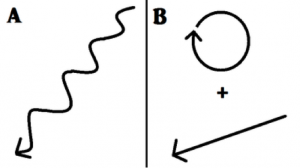5. From Simple Signs to a Full Sign Language: The Nicaraguan Sign Language

A particular case study that shows the development of language evolution is the emergence of the Nicaraguan Sign Language. The Nicaraguan Sign Language (NSL) was created through the interaction between previously isolated deaf people and subsequent cohorts of children exposed to this initial gestural communication (Morgan & Kelg, 2006). With the sequential cohorts of learners, the community has shown the systemization of its grammar over the past years. According to Senghas & Coppola (2001), language systematicity in NSL stems from children aged ten and younger, indicating that young children collectively possess the capacity to learn and create language. This is substantiated by one of NSL’s structural complexity feature, spatial modulation.

Spatial modulations are the building blocks of grammars in sign languages. In developed sign languages, spatial modulations perform functions that provide grammatical relationships like subject and object, deictic, locative, temporal information etc. (Senghas & Coppola, 2001). Senghas & Coppola’s study (2001) aimed to understand the role of spatial modulations in terms of prevalence, function and production rate in NSL grammar systematicity. The results showed that spatial modulations are signed frequently in the early-exposed signers of the second cohort than those of the first cohort, revealing that the second NSL cohort did not merely reproduce the language by their predecessors, but also modified the language as they learned it. Spatial modulations are also found to be the medium of enabling long-distance grammatical relationships among words in NSL, similar to other established sign languages. Additionally, they are communicated with an increase in overall fluency.
In Senghas et al.’s research on NSL (2004), they focused on two of Hockett’s design features of a language: discreteness and combinatorial patterning. These properties arose naturally as a product of the language-learning mechanism although they were not available in the surrounding environment. They found that there was a predisposition for linear sequencing and segmental approaches to bundles of information.
For example, to describe complex motions, like rolling down a hill, participants of the second NSL cohort signed the manner and path sequentially whereas the first cohort articulated the manner and path simultaneously. According to Senghas et al. (2004), when representations express manner and path separately, the iconicity of the simultaneous movement is no longer clear. However, this combinatory change in communication, which allows for more potential and ambiguity, denotes a shift from gestural to more language like expressions in NSL Such combinatory changes that enable the production of infinite utterances from a finite set of elements, explain various core, universal properties of mature languages like how discrete elements (words and morphemes) are combined to form hierarchically organized constructions (phrases and sentences). These changes are further reinforced in the newer cohorts. Likewise, word order regularities driven by children are well documented in creoles and similar sequencing elements are also identified.
